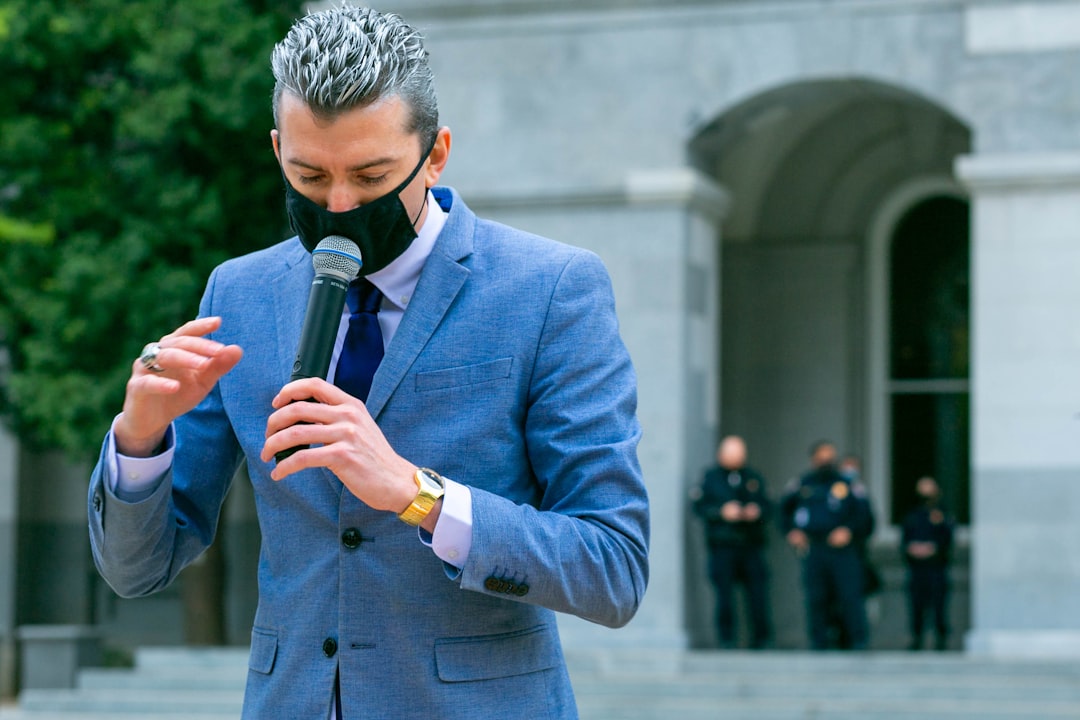A Surprise Appearance That Lit Up the Room (Image Credits: Unsplash)
Los Angeles – The energy pulsed through the crowded hall on a crisp autumn evening, voices rising in a unified chant that echoed the stakes of tomorrow’s vote.
A Surprise Appearance That Lit Up the Room
Picture this: a rally meant to fire up voters on the eve of a pivotal election, and suddenly, Kamala Harris steps onto the stage unannounced. Her presence turned what was already a charged event into something electric. Governor Gavin Newsom, fresh from crisscrossing the state, beamed as the former vice president took the mic, urging the crowd to see Prop 50 not just as a local tweak, but as a frontline defense in national politics.
Harris didn’t hold back. She framed the ballot measure as a direct counter to tactics from other states, like Texas, where Republicans have redrawn maps to boost their numbers. “We refuse to kneel before a tyrant,” she declared, tying the vote to broader fights against partisan overreach. It was a moment that blended local urgency with a glimpse of future campaigns.
For attendees, many waving signs and bundled against the evening chill, this felt personal. Prop 50 would let California’s legislature redraw congressional districts through 2030, potentially protecting Democratic seats in a shifting landscape.
What Exactly Is Prop 50, and Why the Rush?
At its core, Proposition 50 aims to give state lawmakers more flexibility in drawing district lines, overriding the usual independent commission process for the next decade. Supporters argue it’s essential to respond quickly to threats from the Trump era’s lingering effects on voting maps. With midterms looming, the timing couldn’t be tighter – voting wraps up Tuesday.
Newsom has poured resources into this, calling it a shield against “MAGA Republicans” who he says are gaming the system elsewhere. Polls show it’s leading, with over 50% support, but turnout could make or break it. The measure’s backers, including the California Democratic Party, highlight how it could preserve the state’s blue lean without extreme gerrymandering.
Yet, it’s not without controversy. Critics label it a power grab, costing taxpayers $200 million amid budget woes. Still, in a state facing federal pushback, proponents see it as pragmatic survival.
The National Spotlight on a State Ballot
This isn’t just California business. Newsom’s push for Prop 50 has drawn eyes from across the country, positioning him as a Democratic heavyweight eyeing 2028. His alliance with Harris, who rallied with chants of “Yes on 50,” underscores how redistricting battles echo the 2020s’ polarization.
Democrats worry that without action, Republican gains in other states could tip the House balance. Harris invoked this directly, saying Californians must “fight fire with fire.” It’s a reminder that local votes ripple outward, influencing everything from healthcare funding to climate policy.
Recent surveys, like one from Emerson College, back the momentum, showing strong voter favor. But with opposition ads blasting it as “bad governance,” the rally served as a final emotional appeal.
Key Players and Their Stakes
Governor Newsom led the charge, visiting spots like San Diego earlier in the week before capping it in LA. His speech hammered home the budget deficit irony – yes, it’s expensive, but inaction costs more in lost influence. Harris’s drop-in amplified that, drawing cheers from a diverse crowd of union workers, activists, and families.
National Democrats joined virtually and in person, framing Prop 50 as part of resisting “cruel” policies. On the flip side, groups like Reform California decry it as a rushed scheme, urging a “no” to protect fair elections.
- Newsom’s vision: Redistricting as a tool for progressive priorities.
- Harris’s angle: Linking it to anti-tyranny resistance.
- Opponents’ worry: Undermining the independent commission’s neutrality.
- Voter turnout: The real wildcard in this special election.
- Cost concerns: $200 million versus long-term political gains.
How This Fits California’s Bigger Picture
California’s always been a trendsetter, and Prop 50 fits that mold by addressing gerrymandering head-on – ironically, through more state control. It’s a response to how other states have locked in advantages, leaving blue states like this one vulnerable. Newsom tied it to everyday issues, from public safety cuts to emergency response strains.
The rally highlighted unity among Democrats, with speakers from various districts sharing stories of why fair maps matter. One attendee, a teacher from the Valley, noted how district shapes affect school funding. It’s these personal ties that could drive votes.
Looking ahead, passage might inspire similar moves elsewhere, reshaping the congressional map before 2026 midterms.
Potential Outcomes and What They Mean
If Prop 50 passes, expect smoother Democratic holds on seats, potentially adding a buffer against national swings. Failure could expose vulnerabilities, letting independent redraws favor unpredictability. Either way, it’s a test of California’s clout.
Newsom’s team predicts victory, citing the rally’s vibe and poll numbers. Harris’s involvement signals investment in the state’s role as a Democratic fortress.
| Scenario | Impact on Democrats | Broader Effect |
|---|---|---|
| Prop 50 Passes | Stronger seat protection | Boosts state influence |
| Prop 50 Fails | Increased uncertainty | Possible GOP gains |
Key Takeaways:
- Prop 50 empowers lawmakers to redraw maps, countering partisan tricks.
- The LA rally with Harris and Newsom energized voters just in time.
- Polls favor yes, but high turnout is crucial for success.
As the votes tally on Tuesday, this rally might mark a turning point in how states fight for fair representation. It’s a call to action that resonates beyond borders – what role should California play in the national tug-of-war? Share your thoughts in the comments below.




